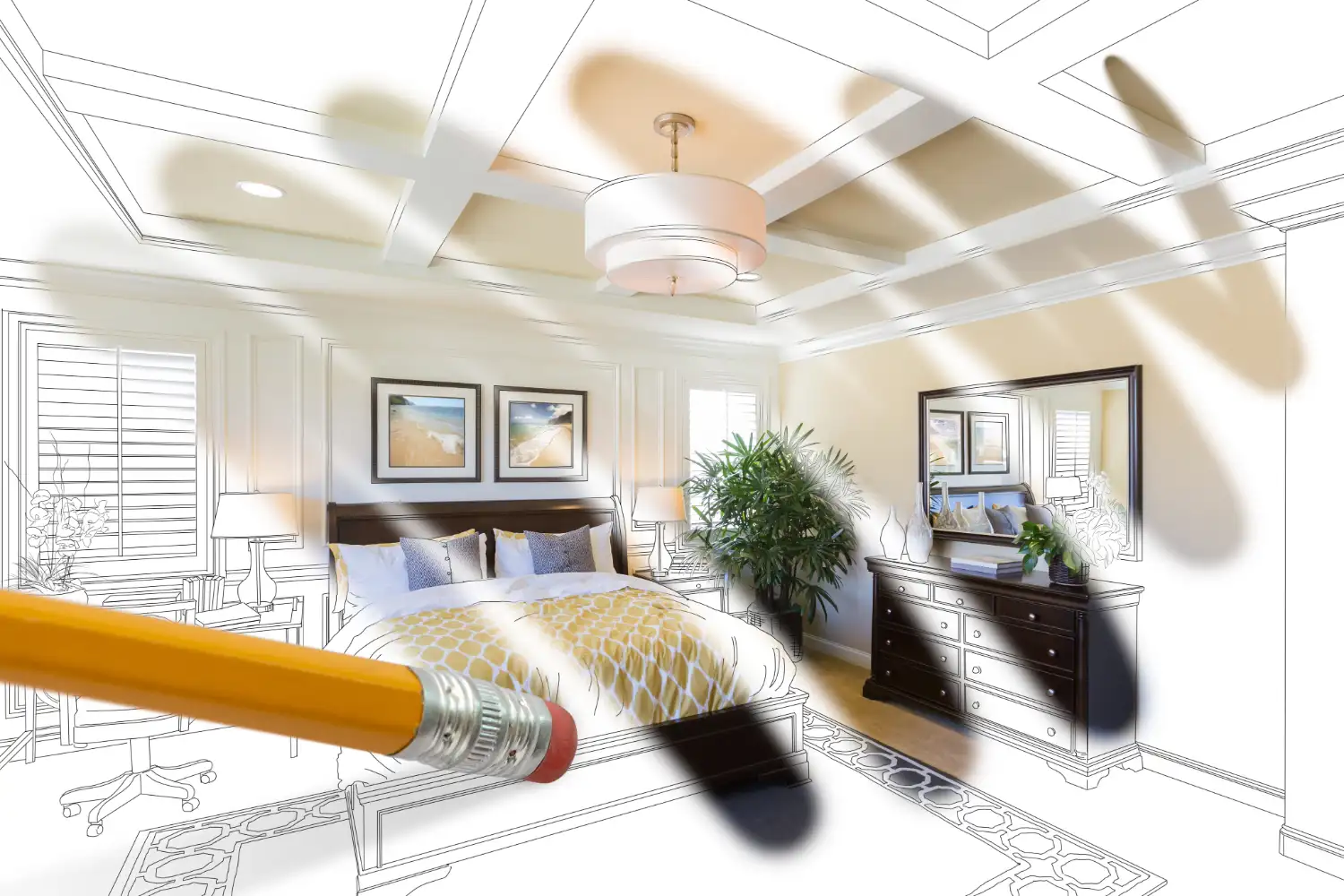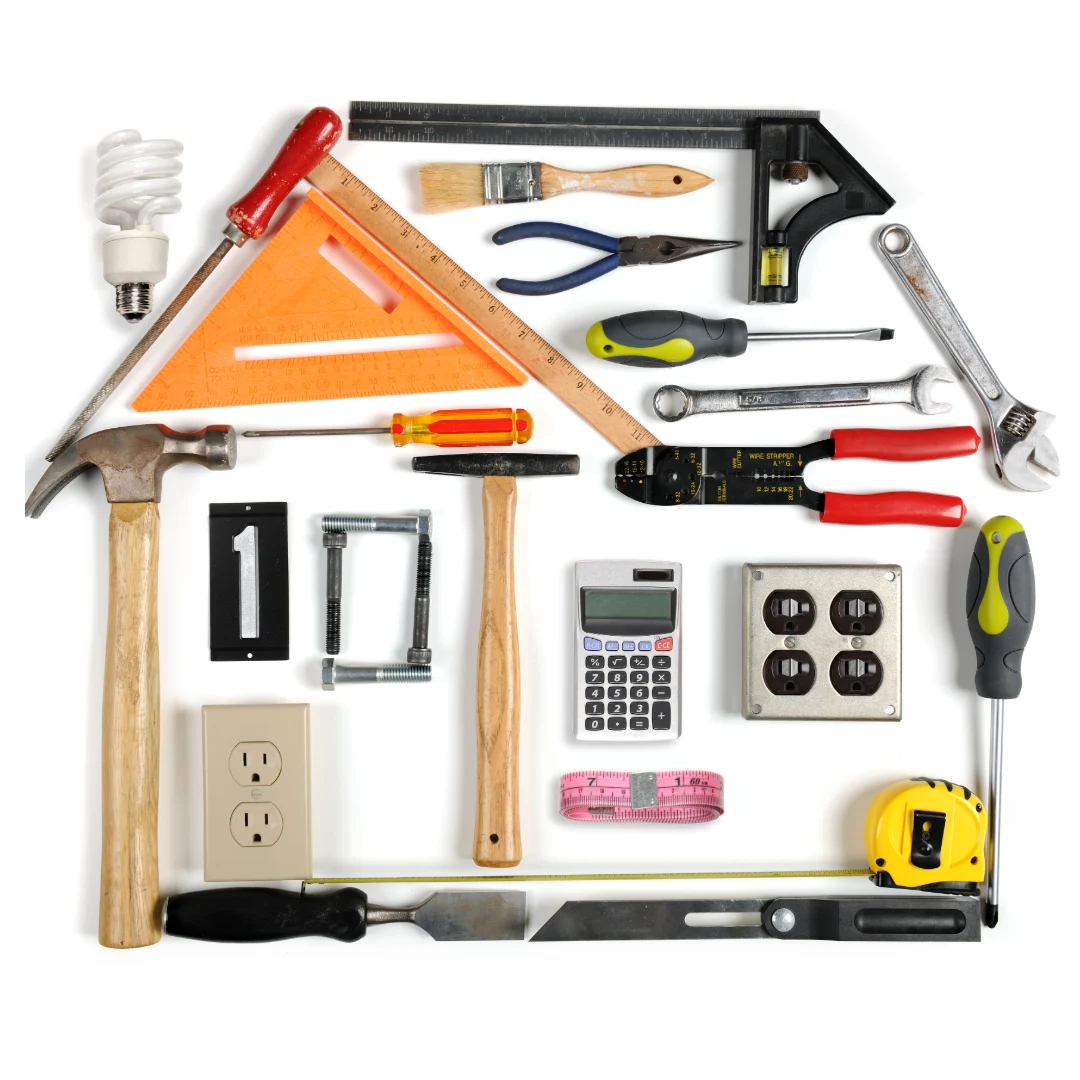

TV shows about home improvement focusing on contractors working magic make home renovation seem like a dream. Watching dated spaces transform into luxurious, light-filled homes undeniably captivates and inspires. The story and visuals are meant to feel attainable, the process looks seamless, and the result always delivers that picture-perfect reveal. But for many homeowners, that inspiration quietly turns into pressure.
Once you start planning your renovation, it becomes clear that reality feels far more complicated than what's shown on screen. Budgets don't stretch as far, timelines shift, and decisions are heavier than expected. If you've ever wondered why your project doesn't feel as effortless as the ones you see on TV, it's time to step back, reset expectations, and move forward with clarity.
Entertainment Over Education
Home improvement TV producers craft shows to keep viewers engaged, not to reflect the realities of home renovation. The goal is storytelling and advertising dollars, not accuracy, which means dramatic reveals, tight timelines, and feel-good moments take priority over the whole picture. Complex processes like permitting, inspections, and delays only make brief appearances on screen because they don't fit the narrative. As a result, homeowners walk away with a skewed perception of how projects unfold.
Decisions that take weeks in real life are resolved in minutes on TV, giving the impression that renovation is simple. In reality, a successful remodel requires planning, coordination, and patience—none of which fit neatly into a 30-minute episode. Without realizing it, many homeowners begin their projects with expectations shaped more by television than by trusted professionals.
Unrealistic Pricing Expectations

Home improvement entertainment often showcases stunning transformations on modest budgets, but those numbers rarely reflect the renovation cost. Production teams usually secure free labor, negotiate steep product discounts, and accept donated materials in exchange for airtime. As a result, homeowners see a large home renovation budget of what can be up to $50,000 for some jobs that includes custom cabinetry, high-end appliances, and designer finishes without realizing those costs would easily double or triple off-camera, and this doesn't include the cost of substantial home repairs such as fixing termite or water damage.
Behind the scenes, production teams benefit from bulk purchasing, sponsored materials, and crews working for exposure rather than traditional wages. Geographic pricing differences further complicate the picture since materials like lumber or stone can vary significantly from one region to another. While TV crews may only complete one or two projects simultaneously, established contractors manage many jobs year-round, with different pricing structures and sourcing methods. Without clear cost breakdowns, viewers develop expectations that don't match reality.
Misleading Timeline Expectations
TV producers often compress home renovations into half hour or hour-long episodes, implying that major projects take only a few weeks to complete. In reality, most remodels take months, with unexpected delays often extending that timeline even further. Because television crews work under construction and production deadlines, they rush projects to meet filming schedules. Contractors may work extended hours with pre-ordered materials and fully coordinated teams. These are conditions that most homeowners don't have. This portrayal leads viewers to believe that renovations can move from concept to completion much faster than they do. It's not as easy as it seems. As a result, viewers often feel frustrated when their timelines move slower, involve more complications, and lack the seamless flow expected from what they've seen on screen.
The Myth of 'TV-Approved' Products
TV producers often present certain products as premium but typically choose them based on sponsorship deals rather than performance. Manufacturers pay for exposure, and the shows highlight their products with glowing endorsements and close-up shots. This presentation makes the products seem like top-tier choices that professionals widely recommend, even when that's not the case. Most shows highlight selections based on visibility rather than long-term quality or durability, though viewers often don't realize it. Homeowners may unknowingly overlook better-suited options simply because a specific brand appeared on the screen. In truth, the most heavily featured products often reflect investments from sponsors' advertising budgets, not necessarily what's best for your home.
Overinflated Impressions On What To Expect From Interior Designers
TV has created a widespread misunderstanding of what interior designers do. Viewers see quick consultations, instant design decisions, and fully furnished spaces come together in a single episode. It looks effortless, but the reality is far more complex. Real interior design projects can take over a year and involve detailed planning, technical drawings, contractor coordination, and ongoing collaboration.
Yet many homeowners approach designers expecting a made-for-the-screen moment. They often overlook that many TV hosts lack formal design training, and local firms handle most of the design work without receiving onscreen credit. The shows prioritize entertainment, not accuracy, confusing homeowners about the design process. A mismatch between expectations and reality can disappoint professional design, even when done well.

Misunderstanding Labor Costs And Expertise
Labor is one of the most significant factors in the cost and quality of a renovation, yet remodeling shows rarely show how much-skilled work costs. Many of the crews featured on TV are brought in for the show, often working on compressed schedules or at discounted rates for the exposure. It's also easy to underestimate the expertise required to complete high-end work, such as laying tile or installing glass panes. What looks simple on camera often takes years of training to do well. Projects that cut corners on labor may look polished on day one but tend to show wear far sooner. Homeowners who understand this distinction are more likely to invest in craftsmanship that holds up over time, not just in the final photo.
Overpromising On Durability And Finish
TV renovations often look flawless at the final reveal, but those visuals rarely tell the whole story. Viewers see pristine countertops, freshly painted cabinets, and gleaming floors, but they don't know how those materials hold up six months later. In many cases, shows prioritize fast installs and low-cost finishes that look good on camera but sacrifice long-term durability.
For example, painted medium density fiberboard (MDF) cabinets might look identical to custom hardwood in a finished shot, but they're far more prone to chipping and moisture damage over time. Laminate flooring can mimic wide-plank oak under studio lights, yet can scratch easily and doesn't age well in high-traffic areas. These shortcuts keep production costs and timelines short, leaving homeowners with unrealistic expectations about how long their renovation will last. What performs well in a staged TV home may not withstand the daily use of a real one.
Don't Believe In Made-For-TV Magic
Most TV shows can dramatize transformations and make them look easy. One episode in, a dated home becomes a showpiece, complete with new layouts, high-end finishes, and smiling homeowners. The pace feels fast, the process looks simple, and the results seem inevitable. But viewers don't see the months of planning, the off-camera crews, and the production resources that make it all possible. Expecting that same experience in real life often leads to frustration when the reality involves delays, compromises, and a much more hands-on journey.
Real Renovation Starts With US Window & Door
Television renovations rarely highlight how much impact quality windows and doors have on a home's overall transformation. Shows focus on dramatic before-and-after shots but skip the technical details that make the difference between a surface-level makeover and a meaningful upgrade. Professional window replacement involves considerations like energy efficiency ratings, proper insulation, structural integrity, and local building codes—none of which fit neatly into a 30-minute episode. The reality is that upgrading your doors and windows can reduce energy costs, improve comfort, enhance security, and increase home value in ways that cosmetic changes simply can't match. While TV crews might install basic replacements for visual impact, US Window & Door specializes in solutions that deliver measurable benefits long after the cameras stop rolling.
Television can be a great source of inspiration, but it rarely prepares you for a renovation's real cost, timeline, and complexity. At US Window & Door, we understand how overwhelming it can feel when reality doesn't match what you've seen on screen. That's why we take a different approach.Our team offers honest guidance from the start, helping you understand what it truly takes to bring your vision to life. There are no scripted timelines or unrealistic budgets; just expert advice, quality materials, and a renovation process you can trust. Schedule a free consultation with US Window & Door, and let's turn your inspiration into a space built to last.




.jpg)